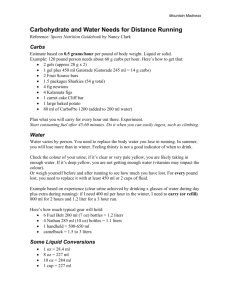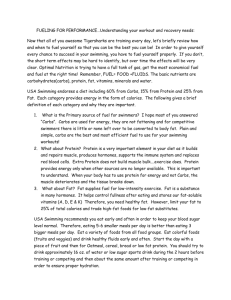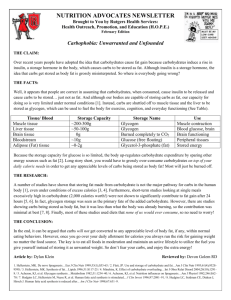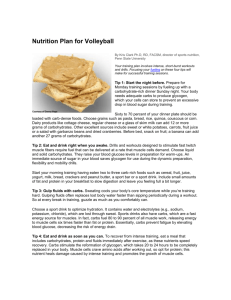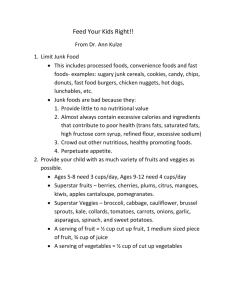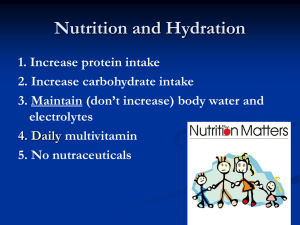G-2027-Food-Lovers-Fat-Loss-System
advertisement
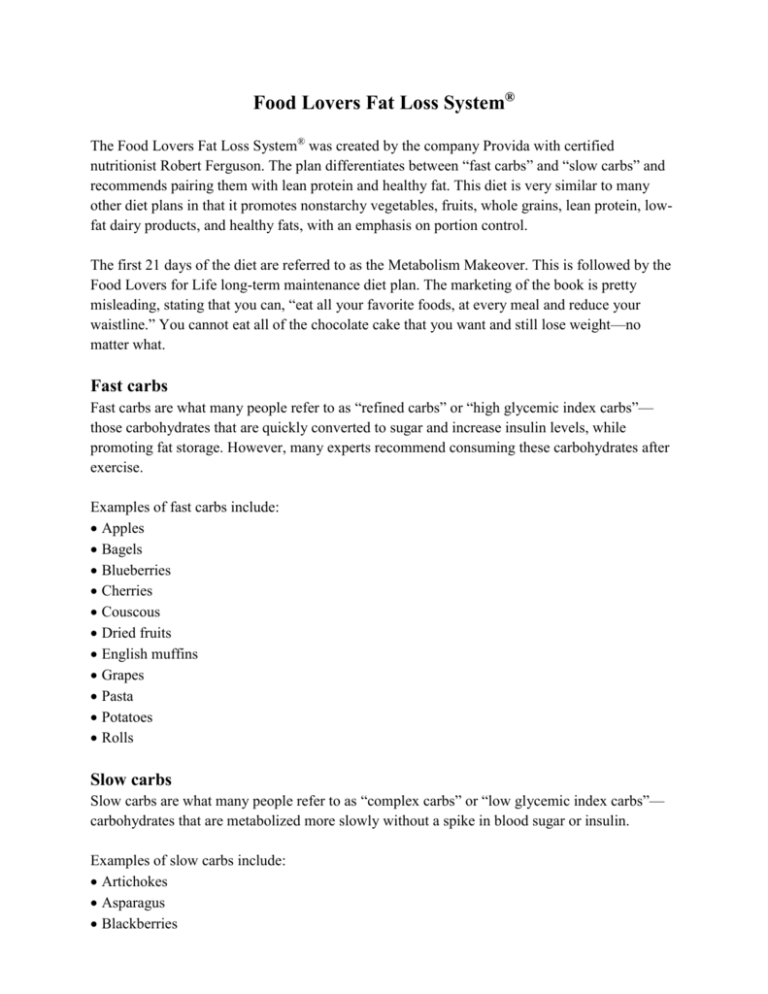
Food Lovers Fat Loss System® The Food Lovers Fat Loss System® was created by the company Provida with certified nutritionist Robert Ferguson. The plan differentiates between “fast carbs” and “slow carbs” and recommends pairing them with lean protein and healthy fat. This diet is very similar to many other diet plans in that it promotes nonstarchy vegetables, fruits, whole grains, lean protein, lowfat dairy products, and healthy fats, with an emphasis on portion control. The first 21 days of the diet are referred to as the Metabolism Makeover. This is followed by the Food Lovers for Life long-term maintenance diet plan. The marketing of the book is pretty misleading, stating that you can, “eat all your favorite foods, at every meal and reduce your waistline.” You cannot eat all of the chocolate cake that you want and still lose weight—no matter what. Fast carbs Fast carbs are what many people refer to as “refined carbs” or “high glycemic index carbs”— those carbohydrates that are quickly converted to sugar and increase insulin levels, while promoting fat storage. However, many experts recommend consuming these carbohydrates after exercise. Examples of fast carbs include: Apples Bagels Blueberries Cherries Couscous Dried fruits English muffins Grapes Pasta Potatoes Rolls Slow carbs Slow carbs are what many people refer to as “complex carbs” or “low glycemic index carbs”— carbohydrates that are metabolized more slowly without a spike in blood sugar or insulin. Examples of slow carbs include: Artichokes Asparagus Blackberries Broccoli Carrots Eggplant Green beans Legumes Lemons Limes Peppers Raspberries Squash Strawberries Tomatoes Zucchini Free carbs Examples of free carbs include: Bok choy Cabbage Cauliflower Celery Chili peppers Cucumbers Lettuce Mushrooms Onions Radishes Spinach Sprouts Protein This plan, like dozens of others, emphasizes the importance of eating protein with carbohydrate to lessen the effect on blood sugar and insulin by increasing the amount of time it takes to metabolize the food. The Metabolism Makeover During the Metabolism Makeover, dieters are taught to change their habits slowly. Drinking enough water, eating breakfast, keeping an eye on sodium intake, and eating more fiber are examples of common-sense advice provided by the authors. Drinking water is emphasized heavily—twelve 8-fluid-ouce (fl oz) glasses of water per day and an additional 8 fl oz for every 20 minutes of exercise. The authors claim that this practice will lead to a 5-pound weight loss in 1 month, although this is not validated in any studies. Individuals following the diet will eat three meals and snacks every 2 to 3 hours using the fat loss plate. The average meal provides 15 grams (g) of protein and 30 g of carbohydrate. Total calories are ≥1200 for women and ≥1500 for men. Dieters can choose from one of three fat-loss plates: 1 protein + 1 fast carb + 1 slow carb 1 protein + 3 slow carbs 1 protein and 1 fast carb One healthy fat is permitted with each meal and only with lean protein and low-fat fast carbs. During the first 5 days, snacks are either a whole food, such as a piece of fruit, or any food that does not exceed 150 to 250 calories. Following the first 5 days, “accelerator snacks” are recommended, which must also contain at least 7 g of protein. Other materials Coaching DVDs, exercise DVDs, meal plans, cookbooks, and a restaurant guide are available for purchase. Recipes, eating out tips, a snack and treat guide, a body fat percentage calculator, the blog, and access to the forums are provided free of charge. Unrealistic promises While the core principles of the diet are solid (avoiding soda, saturated fats, trans fats, foods high in sodium, etc) and provide sound advice, the diet makes unrealistic promises, such as your metabolism will have sped up after 21 days or “you’ll learn how to eat bread, pasta, pizza, desserts—even wine and chocolate—in a way that will cause your body to lose weight instead of gaining it.” No studies back up the claim that borage oil and the “5 Way Metabolic Fat Fighter” will aid in weight loss. The limits on carbohydrates will lead to weight loss for most people. However, MyPlate.gov is free and will lead to the same results if followed correctly. Many Web sites also offer free information regarding the glycemic index and the glycemic load of various foods for free. However, discrepancies do exist. For example, cherries are listed as a fast carb, while strawberries are listed as a slow carb, even though cherries have a lower glycemic index (22) compared to strawberries (40). Glycemic index ratings This scale can help you determine whether a food has a high, medium, or low glycemic index: High glycemic index=70 or more Medium glycemic index=56 to 69 Low glycemic index=55 or less Examples of glycemic index ratings are: Broccoli=10 Cabbage=10 Lettuce=10 Mushrooms=10 Onions=10 Red peppers=10 Peanuts=14 Soybeans=18 Cherries=22 Grapefruit=25 Barley=25 Dried chickpeas=28 Dried kidney beans=28 Lentils=29 Prunes=29 Dried apricots=30 Frozen lima beans=32 Skim milk=32 Yellow split peas=32 Whole-wheat pasta=37 Apples=38 Peaches, canned=38 Pears, fresh=38 Plums=39 Strawberries=40 Spaghetti=41 All-Bran®=42 Black-eyed peas, canned=42 Chickpeas, canned=42 Navel oranges=42 Peaches, fresh=42 Pears, canned=43 Grapes=46 Baked beans=48 Green peas=48 Carrots=49 Mangoes=51 Bananas=52 Orange juice=52 Canned kidney beans=52 Papayas=56 Raisins =56 Apricots, fresh=57 Kiwis=58 Corn, fresh=60 Figs, dried=61 Oatmeal=61 Apricots, canned=64 Beets=64 Cantaloupe=65 Table sugar=65 Pineapple, fresh=66 Whole-wheat bread=69 White bread=70 Bagel=72 Watermelon=72 Pumpkin=75 Jelly beans=80 Cornflakes=83 Baked potato=85 Rice, instant=87 Parsnips=97 Dates=103 References and recommended readings American Diabetes Association®. Glycemic index and diabetes. http://www.diabetes.org/foodand-fitness/food/what-can-i-eat/understanding-carbohydrates/glycemic-index-and-diabetes.html. Updated January 2, 2014. Accessed April 28, 2014. Amerman D. The glycemic index table of fruits and vegetables. http://healthyeating.sfgate.com/glycemic-index-table-fruits-vegetables-1550.html. Accessed April 24, 2014. Daniels C. What is different between fast carbs and slow carbs? SFGate Web site. http://healthyeating.sfgate.com/different-between-fast-carbs-slow-carbs-2306.html. Accessed April 24, 2014. Does the Food Lovers Fat Loss Program really work? Fox News Web site. http://www.foxnews.com/health/2012/01/27/does-food-lovers-fat-loss-program-really-work/. Published January 27, 2012. Accessed April 24, 2014. Food Lovers Fat Loss System. MyFoodLovers.com Web site. https://www.myfoodlovers.com/. Accessed April 24, 2014. Zelman KM. Food Lovers Fat Loss System: diet review. WebMD® Web site. http://www.webmd.com/diet/features/food-lovers-fat-loss-system-diet-review. Accessed April 24, 2014. Contributed By Elaine Koontz, RDN, LD/N Review Date 4/14 G-2027
